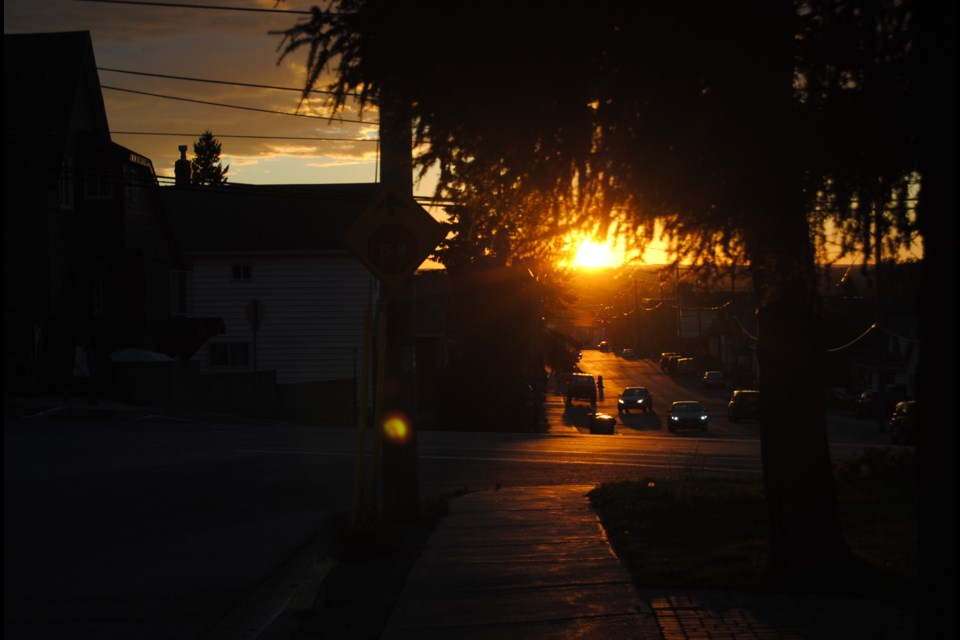Red sky in morning, sailors take warning. Red sky at night sailors’ delight.
Aside from the Navy League and Sea Cadets, there aren’t many sailors in Timmins, but the skies on Sept. 19 were definitely on fire.
These photos were taken between 6 p.m. and 7 p.m. in the evening starting from Second Avenue and Mountjoy S to Waterloo St. north of Algonquin on Monday Sept. 19, 2016. They document the spectacular, fiery sunset of that evening.
Additional contrasting photos were taken the following evening, Tuesday, Sept. 20 in Schumacher around 6:30 p.m. a bright evening sun, but less dramatic than that of the night before.
At one point on Sept. 19, the trees on Second Avenue by Kobzar Park blocked all but a pinhole of light creating a chiaroscuro of light and dark. The iron gate leading to the Kobzar park from Mountjoy looked spectacular as it was backlit by the fiery western sun.
A little further on at Bannerman Avenue, just west of Mount Joy St. S., looking west, as more clouds accumulated in the sky, the reds began to highlight the bluish grey clouds.
Clouds rolling in from the west, added to the contrast by splashing tinges of bluish-grey to the orange-red sky at Wilson Avenue facing west, approaching Preston St.
In their October, 2013 edition, National Geographic asked Stephen Corfidi, a meteorologist with the National Oceanic and Atmospheric Administration, why there are so many spectacular sunsets and sunrises and what causes them.
See the science of colourful sunsets here and here.
Corfidi summed it up this way: the sky is always filled with spectacular colours, but because of our limited sight, we humans are restricted to visible wave lengths – generally, the non spectacular blue and white of a sunny day or a cloudy day.
However atmospheric conditions such as the levels of particles and pollutants in the atmosphere lets a greater range of colours become visible to our eyes.
According to Corfidi, the colours we see, depend on what interacts with the light before it reaches our eyes.
And the fall and winter, because the air is dryer and cleaner, tend to have more spectacular sunsets and sunrises.
As to the origins of the proverb: “Red sky in morning sailors take warning; Red sky at night sailor’s delight”, we went to Infoplease website and their fact checkers say it comes from the Bible.
In the Book of Matthew, he wrote that Jesus told a group of fishermen, "When it is evening, you say, 'It will be fair weather, for the sky is red' and in the morning, 'It will be stormy today, for the sky is red and threatening."
Now you know.
